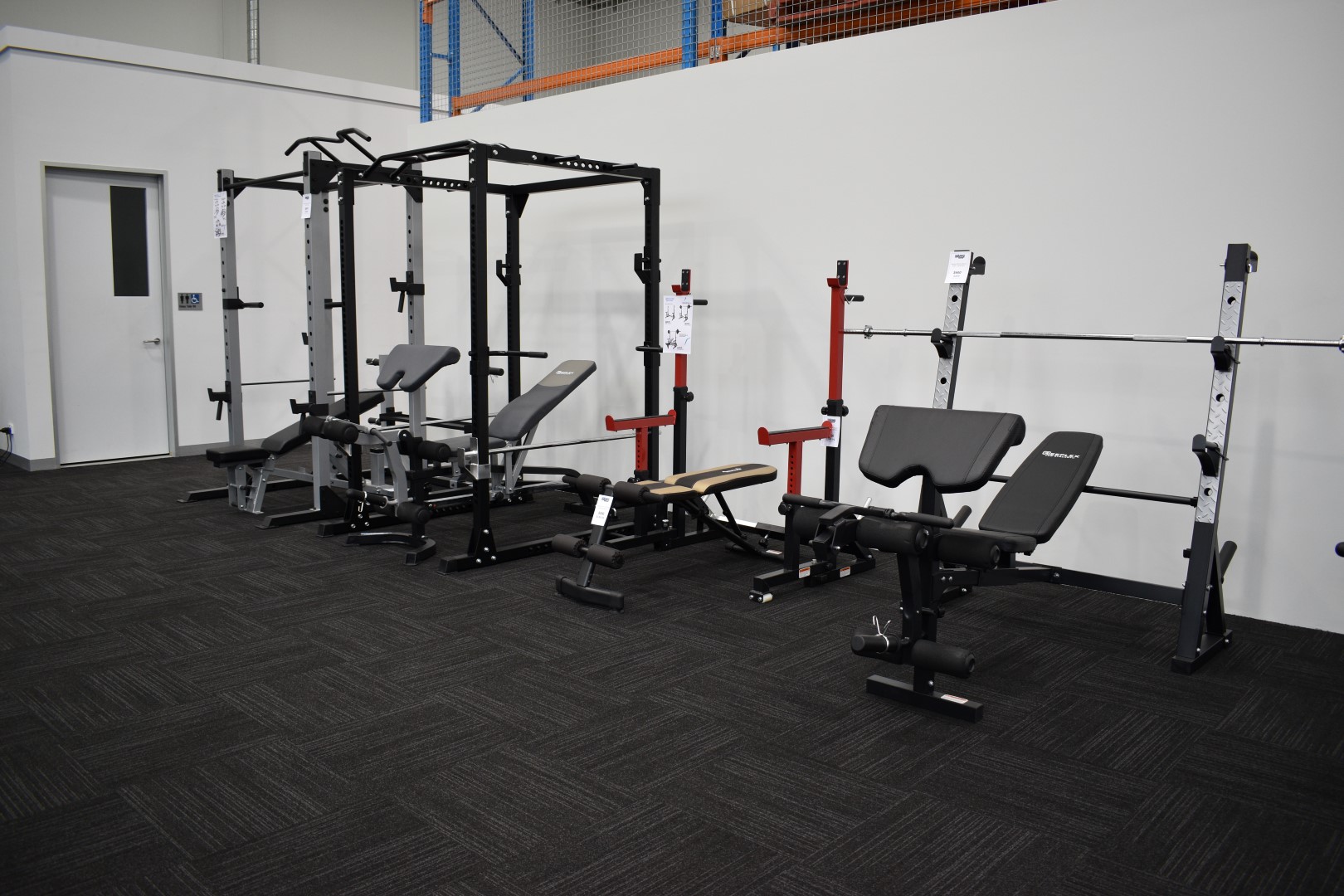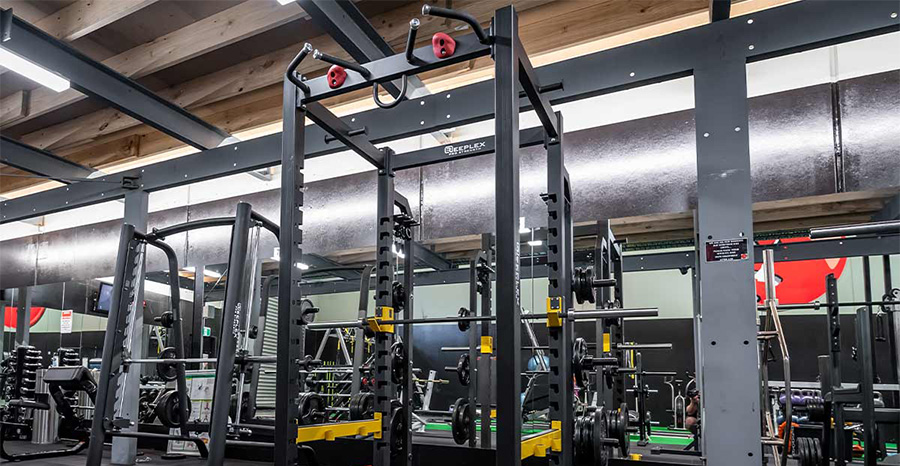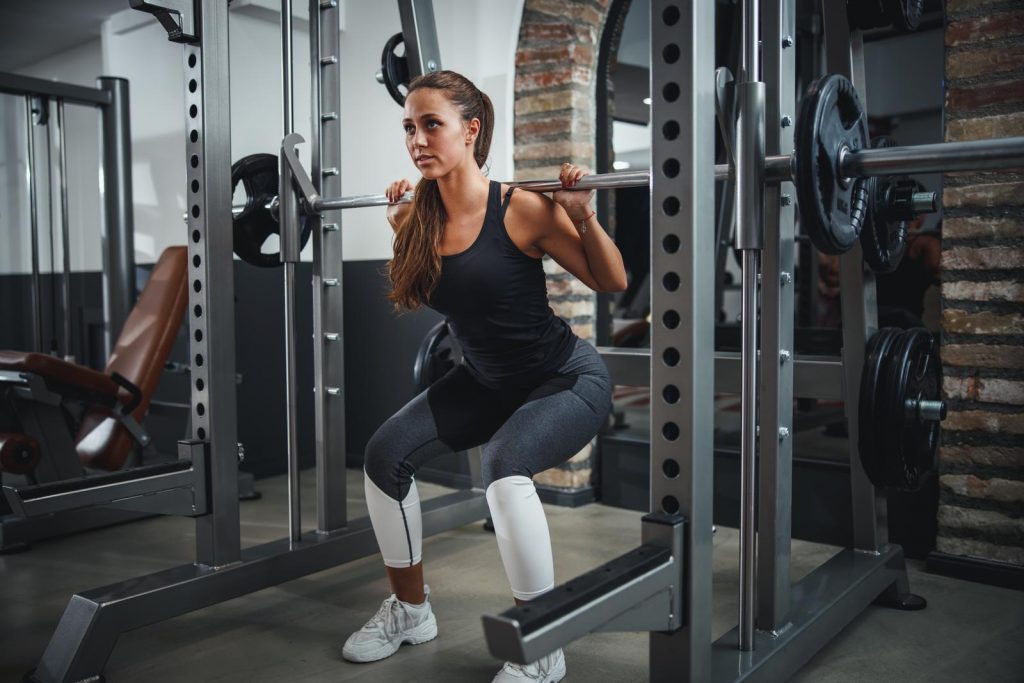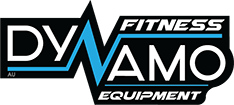
Power Rack vs. Squat Rack: What’s the Real Difference?
When building a home gym, picking the right equipment is absolutely essential. One core choice we often come across are two popular options: power racks and squat racks – along with some compact options like half racks and quarter racks.
Each offers its own unique benefits and is reviewed across various fitness brands and price categories.
In this guide, we’ll dive into what each of these fitness essentials is all about, breaking down their key features, pros, and cons.
We compare them on factors such as size, weight capacity, safety features, and even attachment options like pull-up bars and weight storage solutions to help you decide which one best aligns with your fitness goals and available space.
So, let’s get started!
Key Takeaways:
- Versatility & Safety: Power racks offer more versatility and safety features, making them ideal for advanced lifters or those looking for a complete home gym setup.
- Budget & Space: Squat racks are a more budget-friendly option with a smaller footprint, perfect for beginners or those with limited space, such as personal training studios or garage gyms.
- Your Unique Needs: Your personal preference, fitness goals, and available space should guide your choice between a power rack and a squat rack. Ultimately, it comes down to your individual needs and priorities.
What Is a Power Rack?
A Game-Changer for Heavy Lifting
A power rack is a game changer when it comes to strength training, especially for heavy lifting and versatile equipment options. It’s highly versatile and provides you with a safe and efficient way to tackle a variety of barbell lifts, making it a staple in both commercial gyms and home gym setups alike.

Whether you’re training at a commercial gym or setting up your very own garage gym, a power rack has your back. With features like adjustable hooks, spotter arms, safety pins, and even custom designs, you can lift heavy weights without worrying too much about injury.
Plus, the sturdy steel uprights and high weight rating mean it’s built to last. For anyone serious about hitting their fitness goals, a power rack is definitely an essential tool.
Key Features of a Power Rack
Safety + Versatility
When you think of a power rack, consider the key features that make it a great addition to your workout routine. Adjustable hooks allow you to set the height perfectly for different lifts and personal preferences – it’s like having a custom gym experience at home!
This flexibility is super important because it means you can perform a wide range of exercises, whether you’re just starting out or have years of lifting experience. Safety pins and spotter arms add an extra layer of protection, so you can lift heavy with confidence.
Not to mention, the sturdy steel uprights enhance the build quality, ensuring the rack can handle serious weight. This durability supports all kinds of training routines, so no matter what your workout plan looks like, you can count on your power rack to keep up.
Pros + Cons of a Power Rack
Weighing Your Options for Maximum Gains
When considering a power rack for your home gym, it’s important to weigh the pros and cons to determine if it’s the right fit for your training space.
Pros:
- Handles a wide range of exercises, from squats to bench presses, making it perfect for diverse fitness goals.
- Built-in safety features, like adjustable safety bars and stoppers, boost your confidence when lifting heavy.
- Available in a wide price range – from budget-friendly options around $400 to high-end models over $2,000.
Cons:
- Power racks require a good amount of space, which can be challenging if your workout area is limited.
- The price can vary significantly, so careful budgeting is essential.
Balancing these factors will help ensure you choose the right equipment for your fitness journey.
What Is a Squat Rack?
Your Compact, Budget-Friendly Lifting Station
A squat rack is one of the most popular pieces of fitness equipment, especially when combined with other bodybuilding gear for a complete workout.

It’s specifically designed to support squat exercises and other barbell movements, providing the stability and safety you need during your workouts.
Squat racks are commonly found in both commercial gyms and home setups. They typically come with adjustable hooks, safety features, and sometimes even additional pull-up bars or cable-equipped options.
These features allow you to lift weights with proper form while reducing the risk of injury.
With different styles available – from squat stands to more compact models – squat racks cater to a variety of training exercises.
It’s no wonder they’re a hit among bodybuilding enthusiasts!
Key Features of a Squat Rack
Customizable, Safe + Efficient
When it comes to squat racks, the key features to consider include adjustable hooks, a sturdy build for high weight ratings, and reliable safety features for secure lifting.
Adjustable hooks let you customize the setup for different exercises, accommodating various heights and ensuring safe, effective movements.
This flexibility makes switching between squats, bench presses, and overhead lifts a breeze.
Choosing a squat rack with a high weight rating is crucial for anyone who lifts heavy, ensuring your setup remains stable and secure.
Additionally, features like spotter arms and secure locking mechanisms are essential for preventing accidents, so you can focus on achieving your fitness goals with confidence.
Pros + Cons of a Squat Rack
The Smart Choice for Space-Savvy Lifters
Examining the pros and cons of a squat rack is essential when considering this piece of equipment for your home gym or commercial space.
Pros:
- A squat rack is budget-friendly and takes up less space compared to larger machines.
- Built-in safety features help reduce the risk of injury during heavy lifts.
- Its compact design fits neatly into smaller areas without sacrificing workout quality.
Cons:
- Squat racks are generally less versatile than power racks and may accommodate fewer exercises.
- They may not be ideal if you’re looking for a wide range of attachment options.
Power Racks + Squat Racks: Find the Perfect Fit for Your Home Gym
When it comes to choosing the best equipment for your home gym, the decision between a power rack and a squat rack depends on your training needs and space requirements. Both have their unique benefits and features.
Power racks offer great versatility with adjustable hooks, safety features, and various attachment options, making them ideal for a wide range of lifts. In contrast, squat racks are more compact and budget-friendly – perfect if you primarily focus on squats and similar exercises.
Size + Space: Maximize Your Gym, Minimize Clutter
When deciding between a power rack and a squat rack, space is a key factor. Power racks typically require more room due to their sturdy design and comprehensive safety features. They often need a dedicated corner or side of your gym because of their versatile configuration.
Squat racks, including half racks, are all about efficiency and compactness. They’re a great option when space is tight, allowing you to maintain a functional workout area without sacrificing performance.
It’s all about balancing functionality with the available square footage.
Weight Capacity: Lift Heavy with Confidence
Weight capacity is crucial when comparing power racks and squat racks, as it directly impacts how heavy you can lift safely. Power racks generally have a higher weight capacity – perfect if you’re aiming for maximum strength gains or serious bodybuilding routines.
In contrast, a typical squat rack may handle a few hundred pounds, while a standard power rack can often support up to a thousand pounds or more.
This extra capacity gives you the confidence to push your limits. Combined with safety features like safety pins and spotter arms, you can focus on your form and technique while challenging yourself with heavier weights.
Adjustability + Versatility: Tailor Your Workouts
Adjustability and versatility are what set power racks apart from squat racks. Advanced models, like multi-functional trainers, come packed with adjustable features and accessory attachments that let you customize your setup to suit your unique training needs.
With a power rack, you can seamlessly transition between exercises – from bench presses to pull-ups – ensuring a varied and effective workout.
While squat racks excel at specific lifts like squats and overhead presses, they generally don’t offer the same level of adjustability or versatility. For those who desire a broad range of workout routines, a power rack or power cage may be the more beneficial option in the long run.
Safety Features: Train Hard, Stay Safe
Safety features are a top priority when choosing your gym equipment. Both power racks and squat racks are designed with safety in mind. Adjustable hooks provide versatile height options for different exercises, while safety pins and spotter arms offer peace of mind by preventing accidents if you ever push a little too hard.
Proper setup and understanding how your equipment works are key to minimizing risk. Investing in quality gear with robust safety features means you can focus on your workout without worry.
Value for Money: A Smart Investment in Your Fitness Journey
When comparing power racks and squat racks, price and value for money are essential considerations. Power racks usually start at around $400, with high-end options going above $2,500 due to their enhanced features and versatility.
Squat racks offer a budget-friendly alternative that still delivers on performance.
Conducting a detailed price comparison ensures you find the best option within your budget. Whether you’re building a home gym on a tight budget or investing in premium equipment, understanding the cost differences can help you make a smart decision.
Power Rack or Squat Rack: Which One Should You Choose?

Find the Perfect Match for Your Goals
Ultimately, choosing between a power rack and a squat rack comes down to your fitness goals, budget, and available space. Consider reading reviews and comparing features to find the option that best fits your unique training needs.
When deciding, ask yourself:
- Do you need a versatile machine that supports a wide range of exercises?
- Is space a major concern in your home gym?
- How much are you willing to invest in your training equipment?
Balancing these factors will help guide you to the best decision for your setup.
By considering these factors and reviewing the features and benefits of each option, you can make a well-informed decision for your home gym setup.
Whether you lean toward the versatility of a power rack or the compact efficiency of a squat rack, Dynamo Fitness is here to help you achieve your fitness goals with top-quality equipment.
If you’re unsure which model suits you best, send us your questions; our team is always here to help.
Alternatively, you can find your nearest Dynamo Fitness showroom and test out a few machines to see which one is the right choice for you.
Happy lifting!
What is the difference between a power rack and a squat rack?
A power rack is a piece of gym equipment with four vertical posts, safety pins, and a pull-up bar, designed for various exercises including squats, bench presses, and pull-ups. A squat rack also has four vertical posts and safety pins but typically lacks a pull-up bar and additional features, focusing mainly on squats and similar movements. A power cage, often known as a power rack, may include even more accessories and customization options.
Which one is better for home gym use, a power rack or a squat rack?
It depends on your fitness goals and budget. If you have limited space and a smaller budget, a squat rack might be the better option. However, if you have more space and a higher budget, a power rack offers greater versatility and growth potential for your workouts.
Do power racks and squat racks differ in terms of safety?
Both are designed with safety in mind, but power racks typically offer more safety features, such as adjustable safety pins and spotter arms, making them a safer option for heavy lifting.
Can these racks support different weight capacities?
Yes, both can support varying weight capacities depending on the brand and model. Always check the specifications to ensure the equipment can support your body weight and any additional weights you plan to use. For example, models like the VULCAN Power Rack provide detailed capacity ratings.
Are there additional features with power racks that squat racks don’t have?
Yes, power racks often come with extras like pull-up bars, dip bars, and cable attachments, offering a wider range of exercises. Accessories like those from VULCAN can significantly enhance your workout options.
Is there a significant price difference between the two?
Generally, power racks tend to be more expensive due to their added features and versatility, but prices vary based on brand, size, and weight capacity. A thorough price comparison will help you find the best option within your budget.
